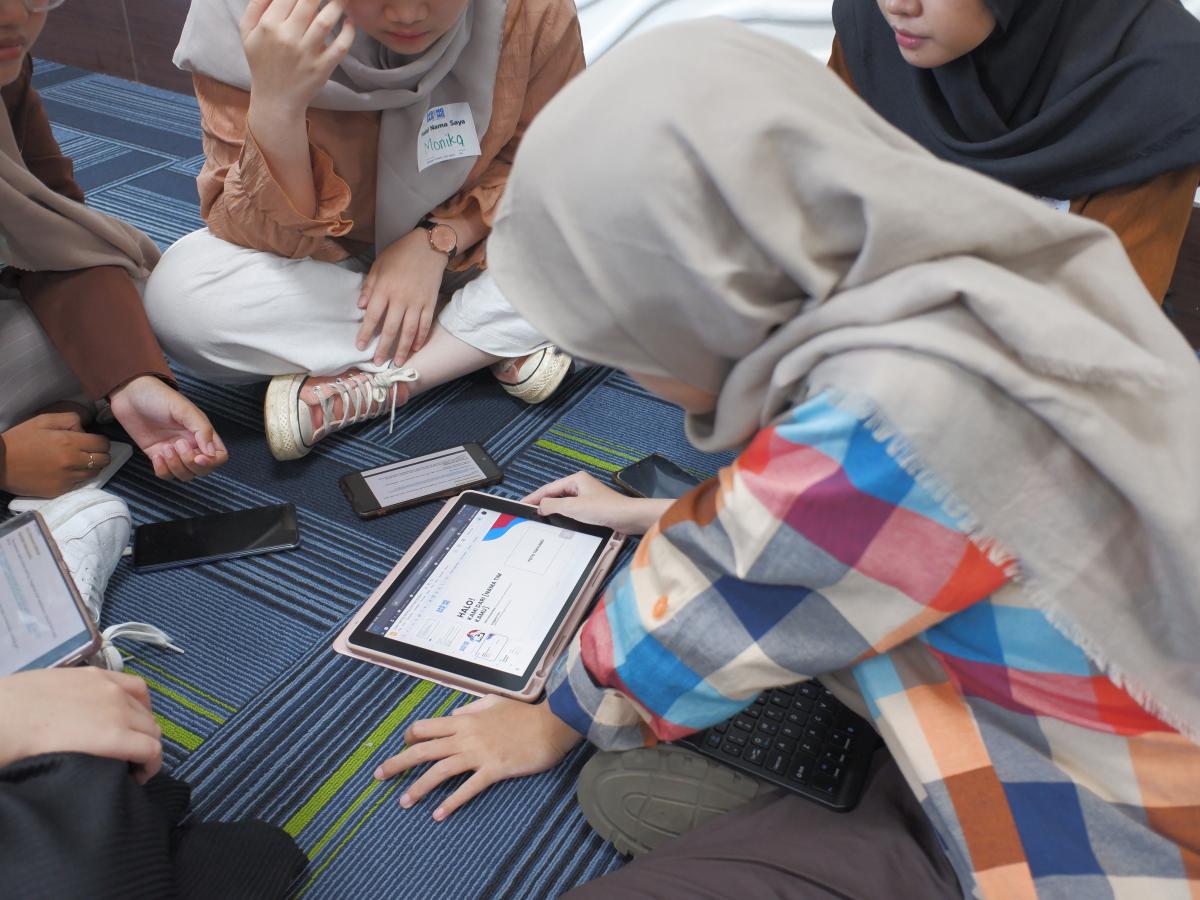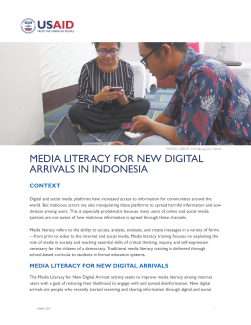Context
Digital and social media platforms have increased access to information for communities around the world. But malicious actors are also manipulating these platforms to spread harmful information and sow division among users. This is especially problematic because many users of online and social media systems are not aware of how malicious information is spread through these channels.
Media literacy refers to the ability to access, analyze, evaluate, and create messages in a variety of forms—from print to video to the internet and social media. Media literacy training focuses on explaining the role of media in society and teaching essential skills of critical thinking, inquiry, and self-expression necessary for the citizens of a democracy. Traditional media literacy training is delivered through school-based curricula to students in formal education systems.
Media Literacy for New Digital Arrivals
The Media Literacy for New Digital Arrivals activity seeks to improve media literacy among internet users with a goal of reducing their likelihood to engage with and spread disinformation. New digital arrivals are people who recently started receiving and sharing information through digital and social media platforms but who have not benefited from traditional media literacy education. In addition to youth, this may include older adults or marginalized groups who are outside the formal education system.
Results
Since its launch, the project has achieved the following:
Assessing the Online and Social Media Landscape. The project developed and delivered a state of the art artificial intelligence (AI) system—the Misinformation Early Warning System (MEWS)—to identify altered and manipulated social media content and disinformation and to determine how it is being spread. Examples of disinformation tactics may include deepfakes and social astroturfing, in which users are paid to like or promote malicious content.
Adapting and Deploying Media Literacy Curricula for Online and Social Media Systems. The project is continuously developing education videos that feature local Indonesian media literacy experts who unpack various concepts related to disinformation. This content is backed by http://literata.id and is made available all over social media systems. In addition to this content, the team has developed the Gali Fakta game in which players are tasked with identifying and calling-out misinformation in a simulated family WhatsApp group.
Identifying and Delivering Media Literacy to New Digital Arrivals. The project delivers digitized media literacy content to a selected group of social media users and evaluates its performance. Results show that participants are nearly 50 percent less likely to share misinformation compared to a control group.
Engage and Equip Organizations to Counter Malign Influences Online. The project seeks to develop closer relationships with Indonesian-based organizations and USAID partners to share best practices for countering malign influences and facilitate the local adoption of MEWS.
Piloted in Indonesia in 2018 and 2019, Media Literacy for New Digital Arrivals is being implemented by a consortium of organizations led by the University of Notre Dame and including IREX, Moonshot CVE, and GeoPoll.
Contact
Dilshika Jayamaha, USAID Washington at djayamaha@usaid.gov


